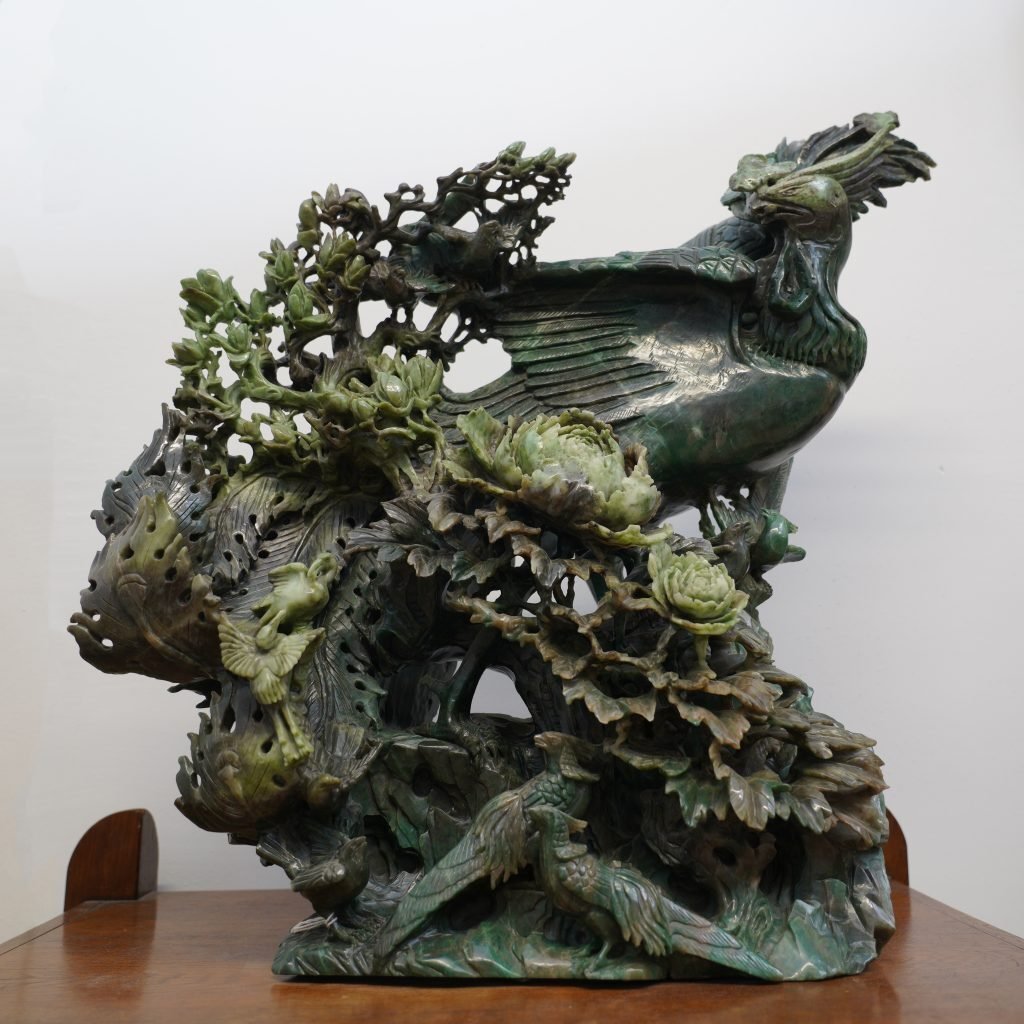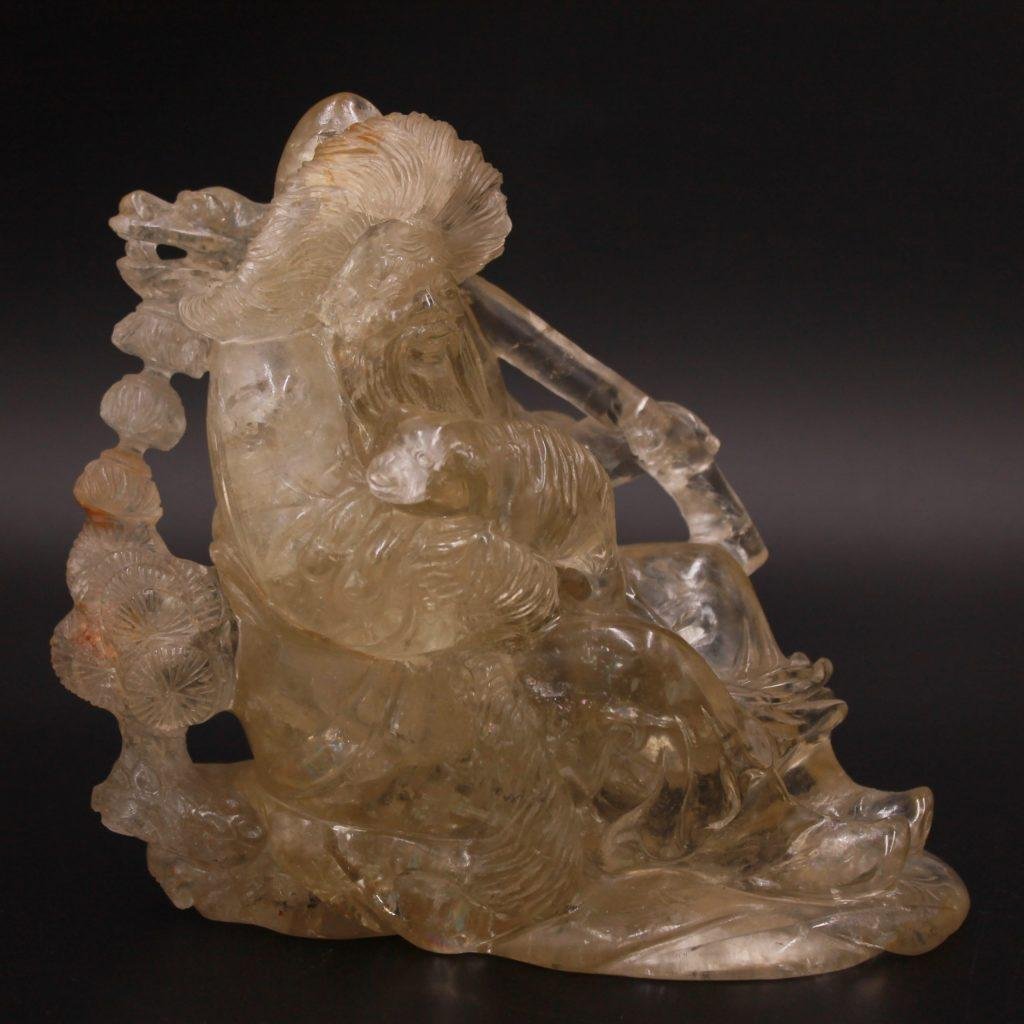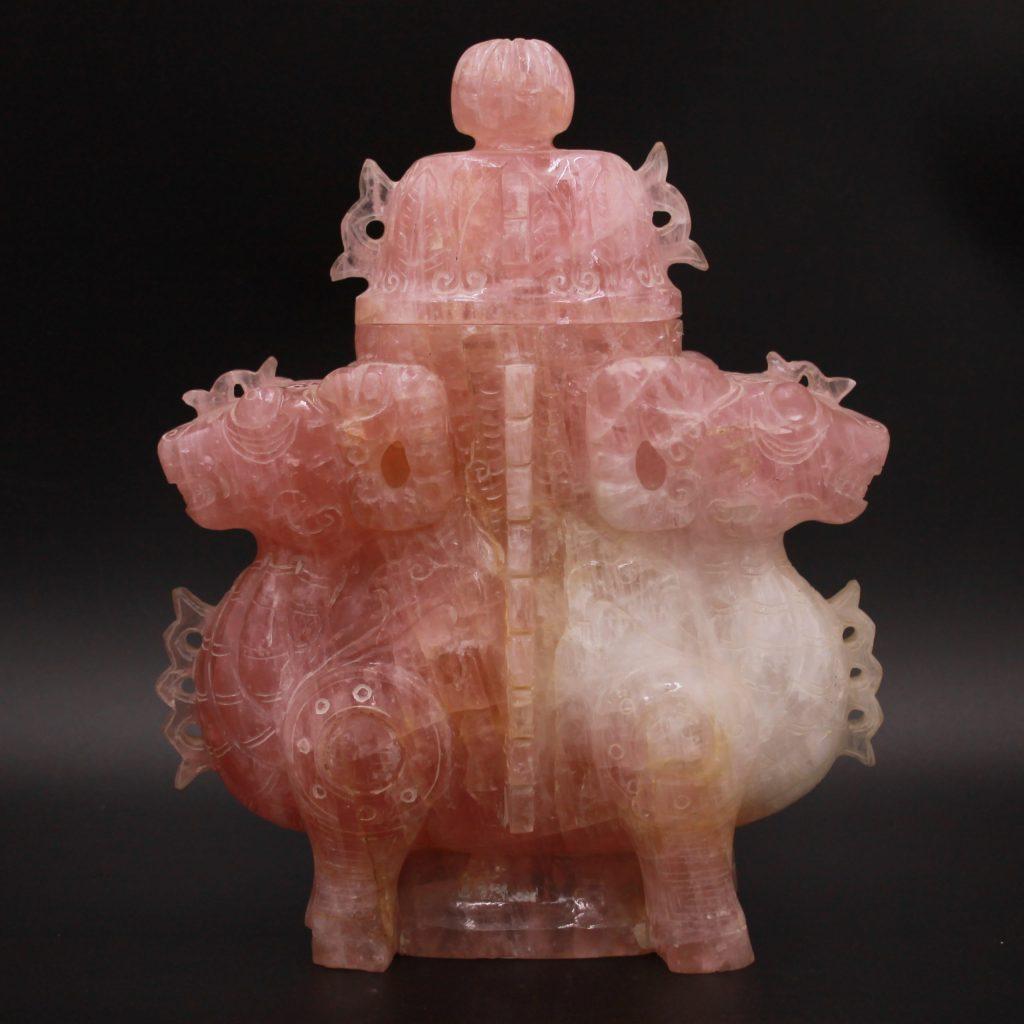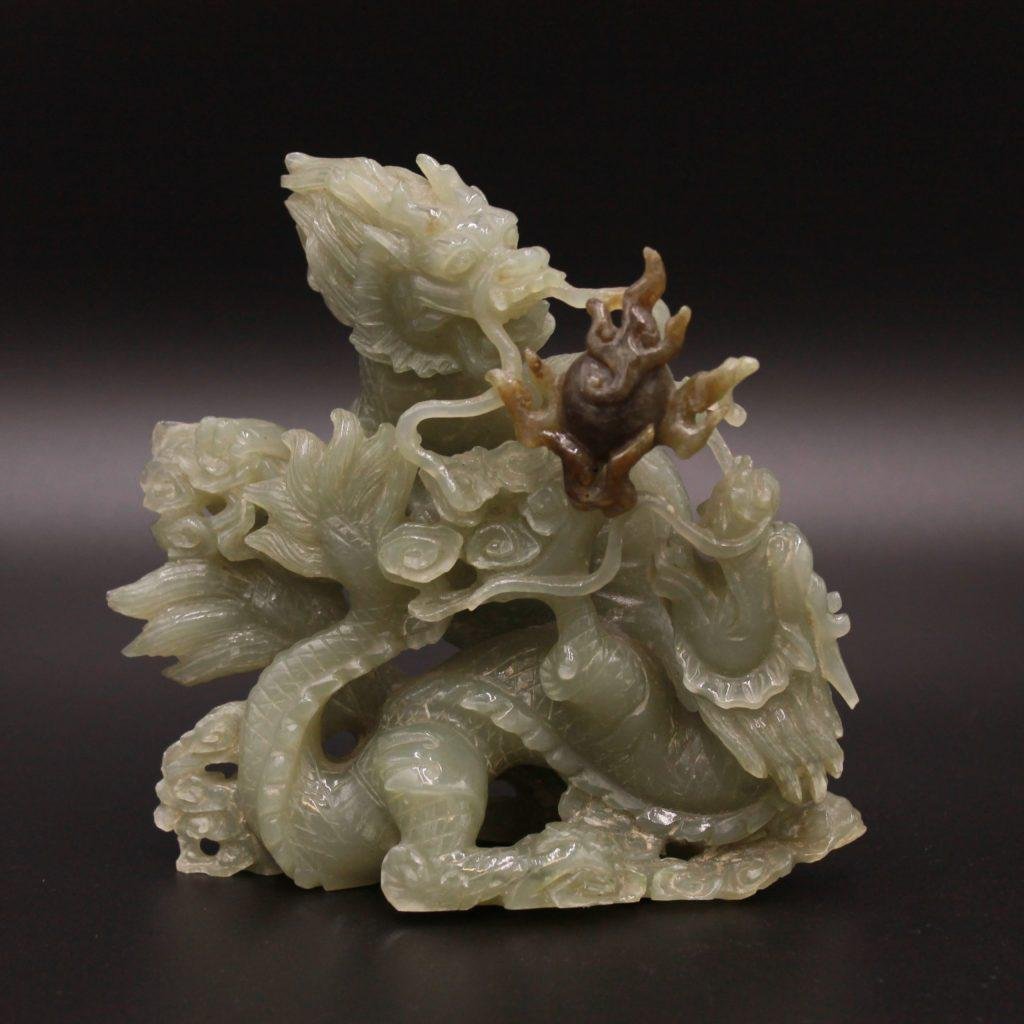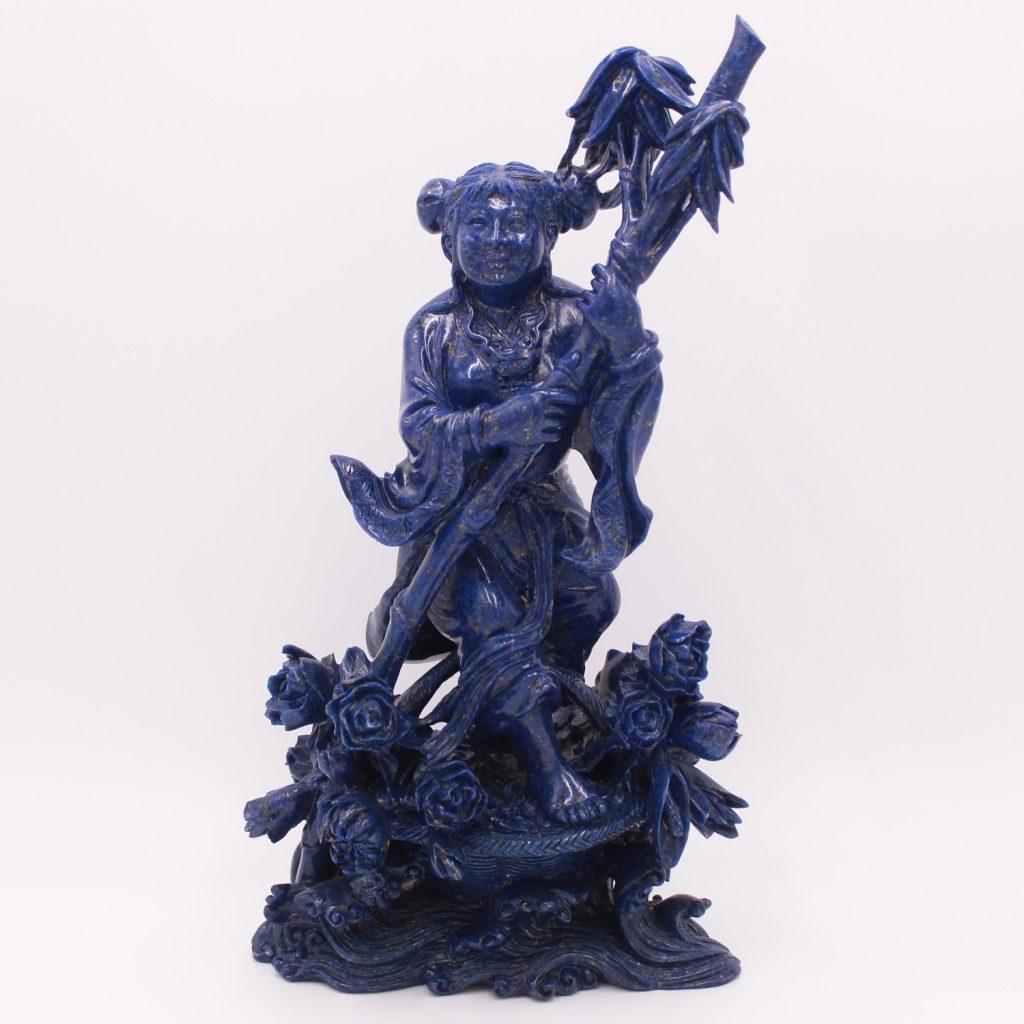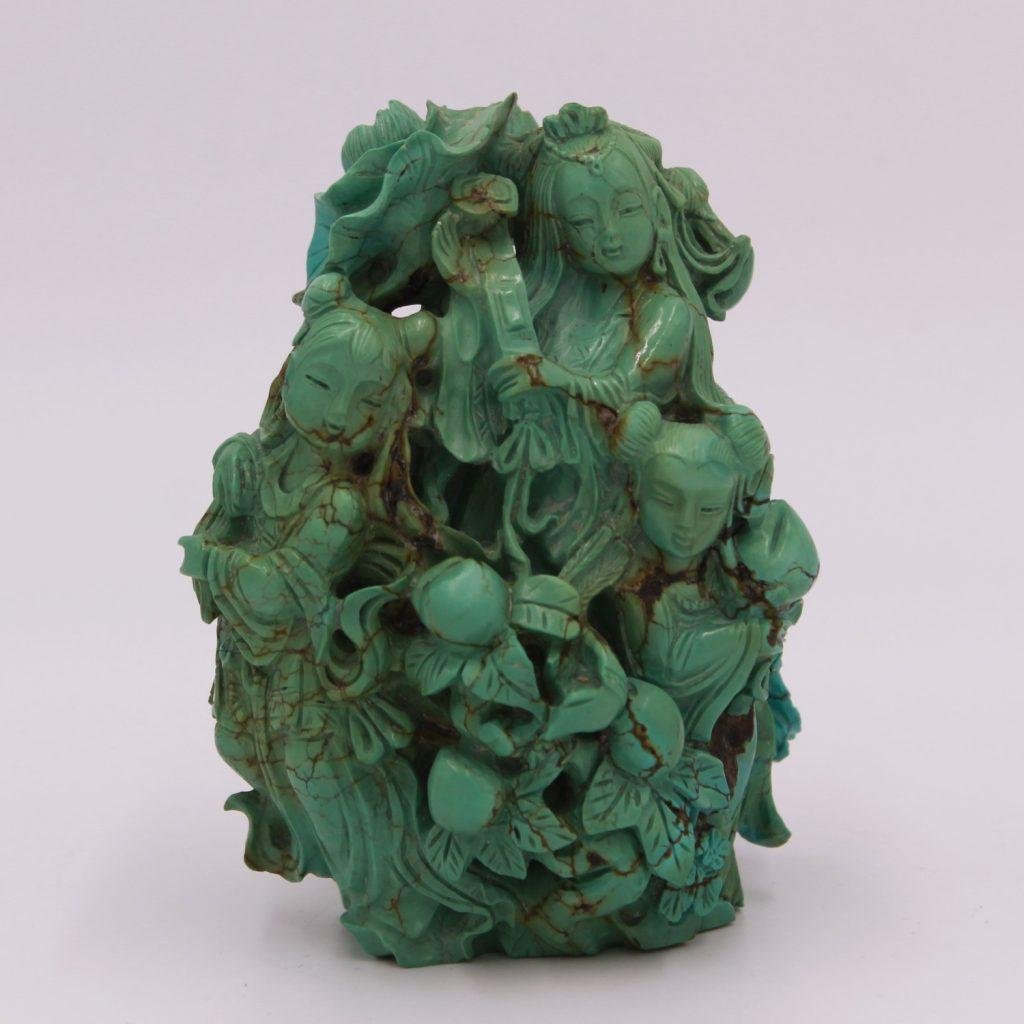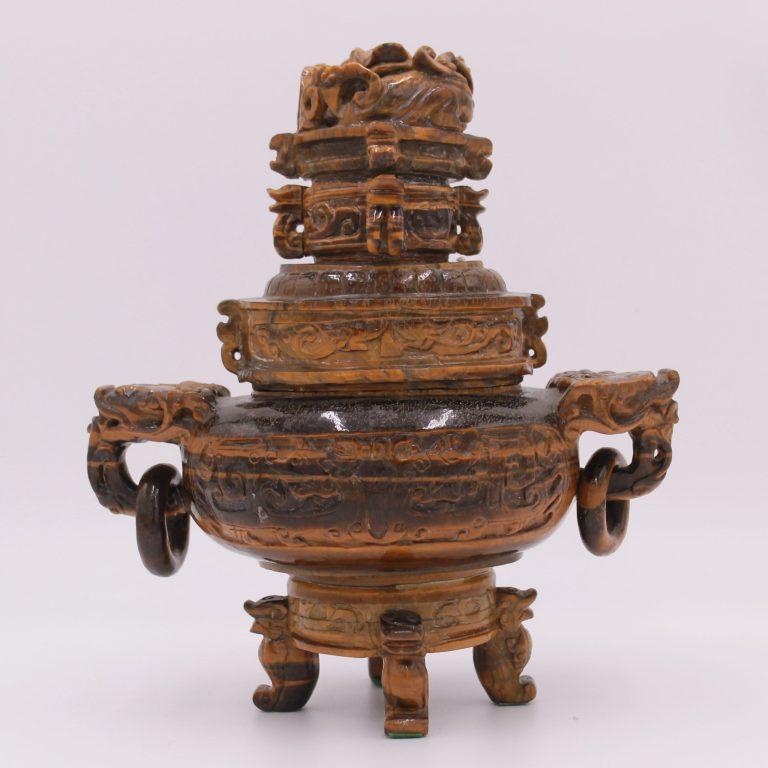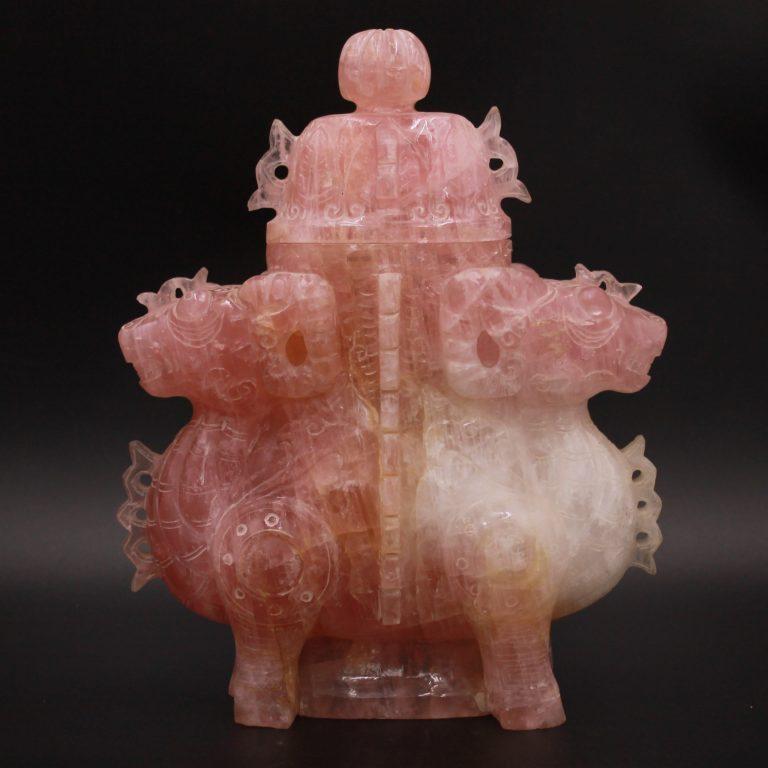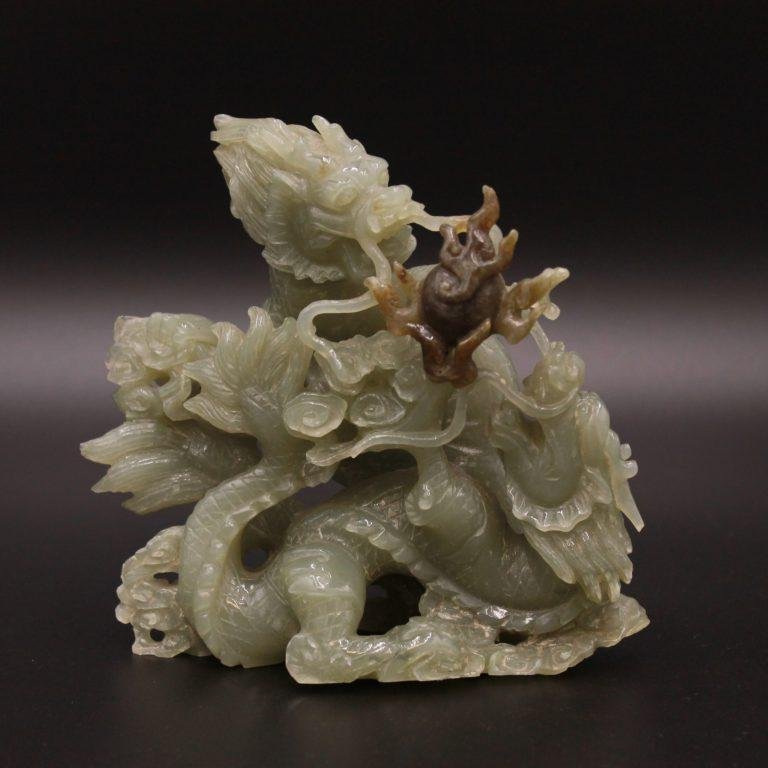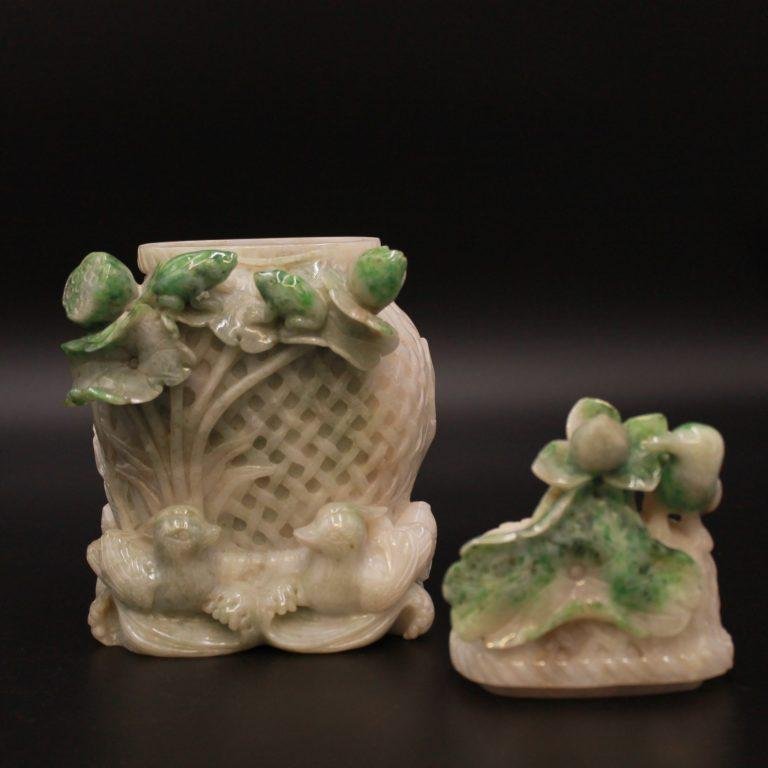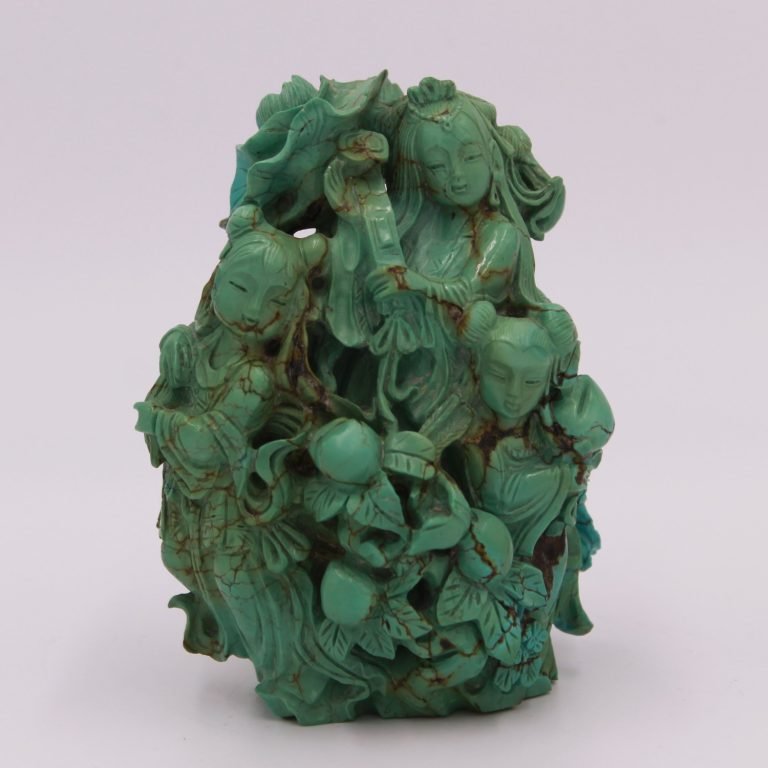description
The beauty, unalterability and hardness of gems most probably explain Man’s fascination with them since the Neolithic. And the development of stonecraft was closely correlated with the history of human civilization.
The oldest jade objects ever found were spear tips and protective amulets, which shows ancient peoples’ interest in these gems to protect themselves both physically and spiritually.
As human civilization developed and economic affluence expanded, gems like malachite, lapis lazuli, jasper, carnelian agate, or turquoise became major materials for ornamentation, notably jewellery and decorative arts. In Egypt, China, Persia, and Vatican City, they were synonymous with wealth and regal dignity. Many kings and emperors appreciated their beauty.
Given the hardness of such gems, carving them into works has always been a real challenge for related artisans and artists. But each stone, having a shape and a colour / colours of its own, does always give birth to a unique piece.
technique
The design stage.
The designer needs to analyze the rough stone in order to define the most advantageous cut and shape. This requires a perfect knowledge of stones, their cracks, their internal and external colours. Any inclusion or impurity that cannot be observed externally still matters to evaluate the potential of a stone. After a several-day analysis, the designer draws the sculpture-to-be on the rough stone and makes his/her recommendations to the sculptor.The carving stage.
In addition to the usual rules of sculpture and proportion, carving also requires delicacy and strength from the artisan who strives to fashion a minute piece out of hard stone. Jade is 7 on the Mohs Hardness Scale. Often to cool down the tools that are being used, a trickle of water continuously flows between those tools, the stone, and the sculptor’s fingers. They are hard working conditions.The polishing stage.
Though often unknown by the general public, this last stage is actually essential to enhance the brightness of the material and make it soft and smooth to the touch. As polishing needs to be light and delicate not to rub carved details off, it absolutely requires a keen understanding of the sculpture beforehand. Moreover, the polisher has to determine and take into account the direction of the bed – or grain – of the stone, each stone having its own, in relation to its initial structure. If done in the right direction, the polishing of the stone is easy; if not, small fragments may come off the stone and cause cracks. The operation can be repeated up to 7 times, using progressively thinner sandpaper sheets, for perfect brilliance. As it requires a very long apprenticeship and offers hard working conditions, the job of a sculptor no longer appeals much. In Kōfu (Japan) and Idar-Oberstein (Germany), the former stone carving workshops have been abandoned for long. In China, this job is dying out too.Discover more…
We will be delighted to answer all your questions.




